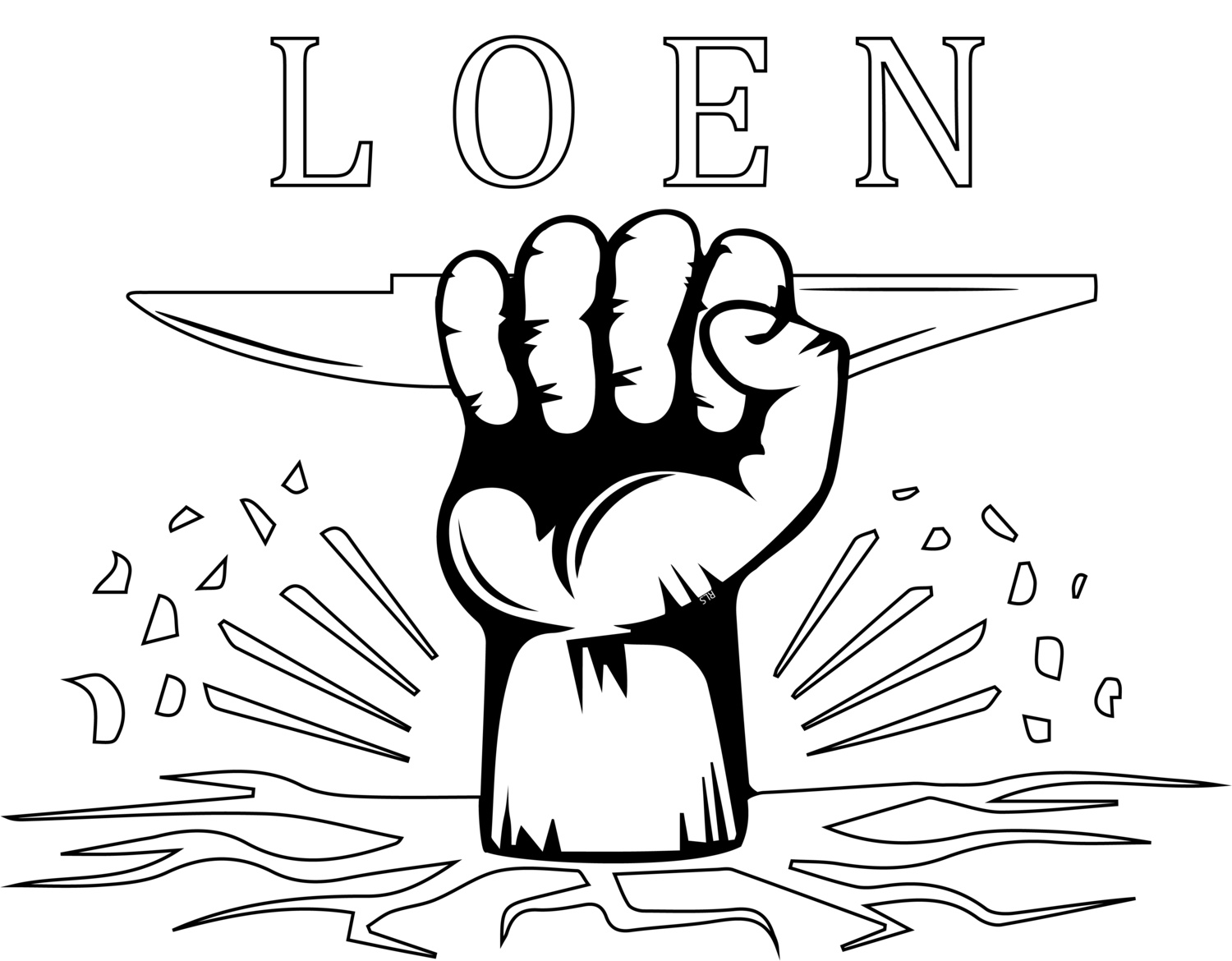This article was originally written for the Scandinavian Blacksmithing Magazine, JERN. More information on this at the end of the article.
At Næs Ironworks the thump of the water-powered hammer once more rings out above the roar of the river.
On Tuesday 13 August the newly restored hammer was formally inaugurated at Næs Ironworks in Tvedestrand, Norway. Sixty-five years have passed since the dam burst in the 1959 flood, yet the hammer‐blows can again be heard across the valley just as they did for nearly three centuries before.
Norway’s Prime Minister, Jonas Gahr Støre, cut the ribbon, eat some cake and spoke about his family’s close ties to Jøtul Foundry and the nation’s iron industry. It was his grandfather Johannes Gahr who rescued Jøtul from the brink of bankruptcy in 1927. Støre recalled childhood trips to the Fredrikstad works in his grandfather’s company.
“When I was born in 1960 my grandfather retired, but he still had a guiding hand at the works, so I joined him on visits to the plant in Fredrikstad … He was passionate about everything connected to iron, cast iron and that history. We have plenty of pots, pans and fine forged pieces at the cottage and at home.” — Støre
Prime Minister Jonas Gahr Støre had a go at holding a length of steel beneath the hammer.
One story worth retelling alongside that of Næs Ironworks itself, is that of Dag Ellefsen. The son of the last works-master, Dag was operating the power hammer back in 1959—despite being only thirteen at the time. That naturally raises questions about child labour and health-and-safety in those days, but we shall let them rest for now.
“I’m one of the few who can remember the hammer running—and I was part of it myself.” — Dag Ellefsen
Dag Ellefsen with the hammer he controlled back when he was 13 years old, before the dam burst.
With some 300 spectators, including the Prime Minister and other dignitaries, Dag once again took the levers, let the water through and started the hammer, just as he had done as a lad before the dam gave way in 1959.
In its final working years the blast furnaces at Næs stood silent, yet the crucible shop and hammers ran on, producing very high-grade crucible steel. It was, Dag explained, a niche market—an exclusive product of equally exclusive quality.
For perspective: Næs Ironworks made money with hammers based on a design that reaches back to China’s Han dynasty (202 BCE – 220 CE), while pairing it with crucible-steelmaking, the cutting-edge technology of the Industrial Revolution. A combination I find utterly fascinating. Today only one other crucible-steel works survives in Europe, in Sheffield, England.
Benjamin Kjellman-Chapin forging on the newly restored water powered trip hammer.
About Næs Ironworks:
Of the 37 ironworks Norway had, Næs was among the first and the very last, and it stayed in operation longer than most.
Founded 1665 as Baaselands Værk with a blast furnace and hammer shop.
1830 – blast furnace doubled with a second stack; both fired together for extra-large castings.
Ore came chiefly from the nearby Arendal mines, and the charcoal from the surrounding forest.
Hammer work holds three water-powered tilt hammers: 150 kg, the newly restored 350 kg, and a beast of about one tonne.
Early 1800s under Jacob Aall, Næs had roughly 400 employees—smiths, miners, charcoal-burners, haulage workers on payroll.
Blast furnaces rebuilt to the Swedish pattern in 1886; pig (cast)-iron production ceased 1909.
The Rolling-mill workshop burned down for the second time in 1942, but the machinery was re-erected on the grass outside the hammer works, and work continued in the open air.
The production at Næs Ironworks was substantial. Output in the 1830s topped at over 1 000 tonnes of iron a year, making Næs one of Norway’s largest works at the time, including bar stock and cast good. Products ranged from stoves, bullets, canon balls and pans to tools and later ploughs. There as also made 130 cannon that were delivered to the Norwegian Armed Forces.
The dam that supplied the entire ironwork with water, burst in 1959, and Næs Ironworks Museum founded 1966. All buildings and equipment were gifted to the museum.
Listed in the National Heritage Board’s plan for technical-industrial monuments 1994 and remains one of fifteen priority sites in the current preservation programme.
For opening times, demonstrations of the hammer and more history of Næs Ironworks, visit jernverksmuseet.no.
Interested in more articles like this? Join either the Norwegian, Swedish og Danish Blacksmithing Society to receive JERN, a Scandinavian blacksmithing magazine, three times a year.
You can also support my work directly with a small monthly contribution at Patreon.com/rasmusloen, or you can make a one-time contribution at paypal.me/rasmusloen . Your support helps me write more articles like this and produce more content on blacksmithing and its history.



